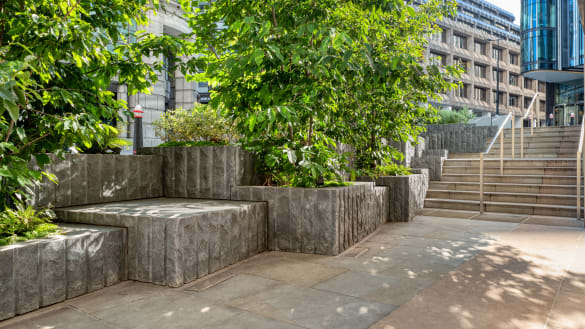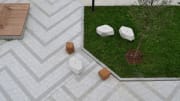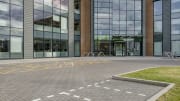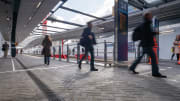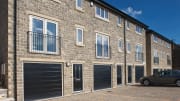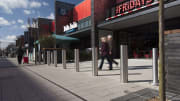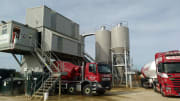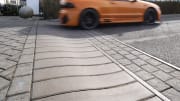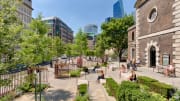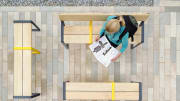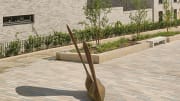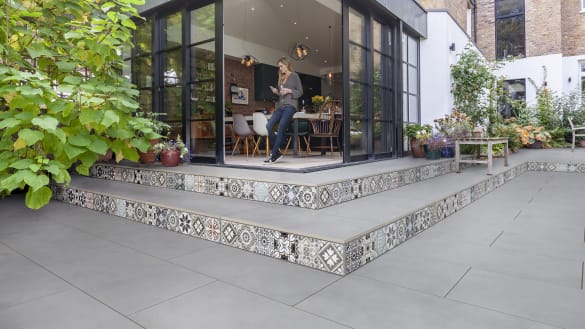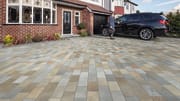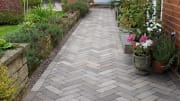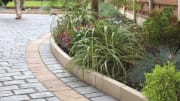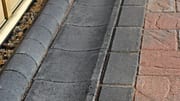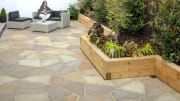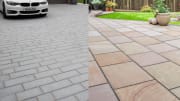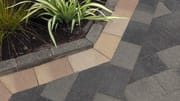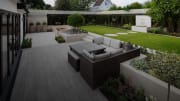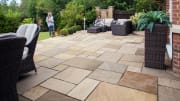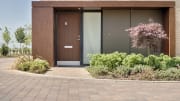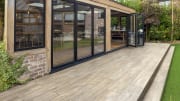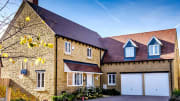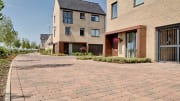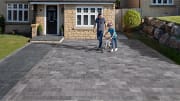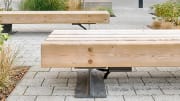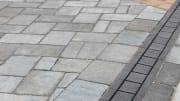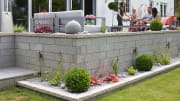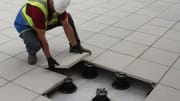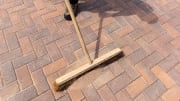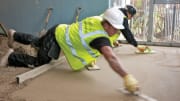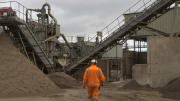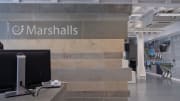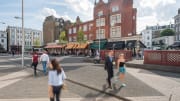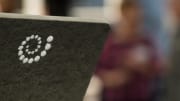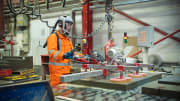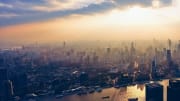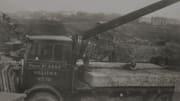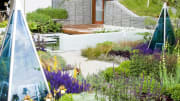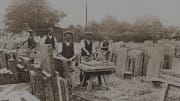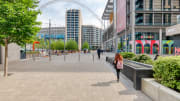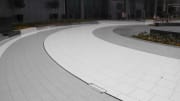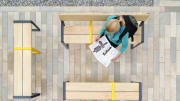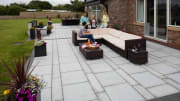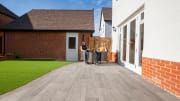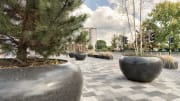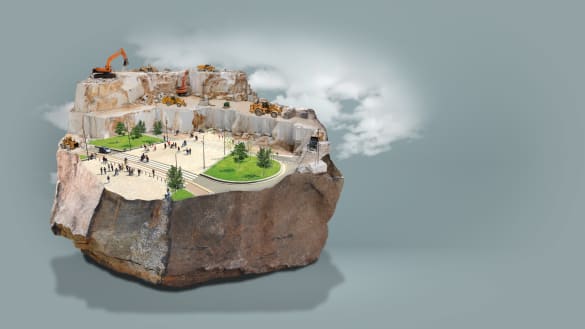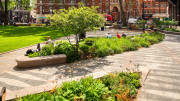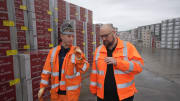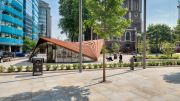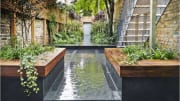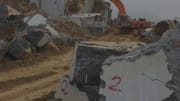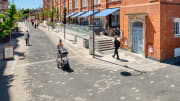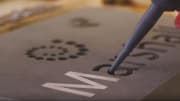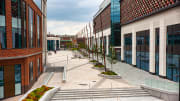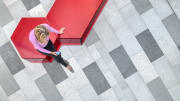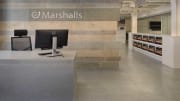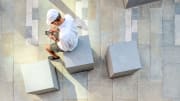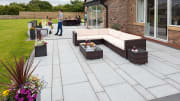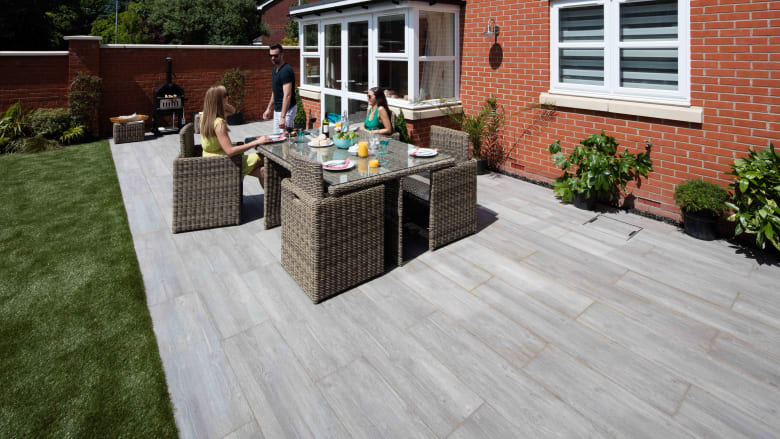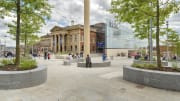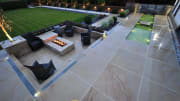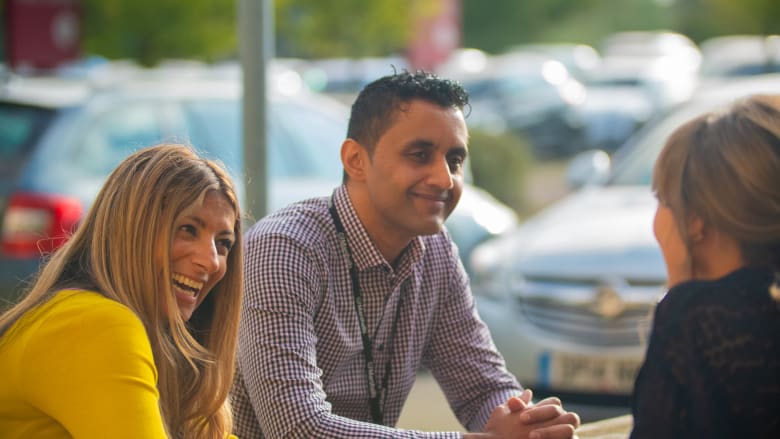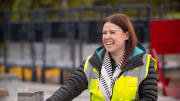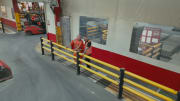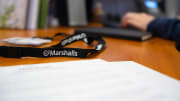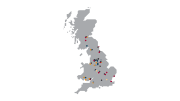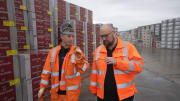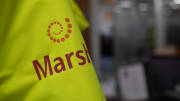This week we launch our Creating Safer Spaces whitepaper, the result of extensive research with the public and insight from the industry. We’ve done this work to understand how safe people feel when they’re using public spaces, and identify more steps that our industry could take to design and create spaces that feel, and are, safer for everyone to use.
Understanding how safe people feel in public
One of the key findings of the research was that 79% of people feel more unsafe when out at night and are on average 12 times more likely to avoid such areas than in daylight hours.
Parks and gardens are considered the least safe spaces when it’s dark, with 80% of people avoiding them during this time – 40 times higher than in the daytime. We also found that some people commonly change their behaviour to improve their perceived safety when out in public. Often, people walk a longer route that is busier and/or better lit (64%), or cross the street to avoid others (58%). Other safety measures include only wearing one earphone or listening at a lower volume (32%) and carrying a personal alarm (11%).
Using insight to create the Creating Safer Spaces white paper
The white paper highlights the significant difference between how the public view spaces at different times of the day. It emphasises the importance of design considerations when supporting aspirations for 24-hour cities, as well as presenting more opportunities and benefits to individuals and communities.
To support landscape designers, as well as planners, architects and local councils in creating public spaces where people feel safe from day through to night, the white paper includes seven best practice design pillars. Covering principles from vision and wayfinding, to acoustics and technology, these considerations are being used by industry to provoke fresh thinking and debate. The white paper was written in partnership with the Landscape Institute, and an early version was shared at a roundtable discussion run by the Architects Journal for additional feedback and consultation. The work is also endorsed by the Neighbourhood Watch, who welcomed the thought-provoking insight and the impact this will hopefully have.
People cited poor visibility whereby potential dangers are concealed as well as a lack of people as reasons for having a heightened awareness of safety when it’s dark.
Elaine Mitchel-Hill, ESG & Human Rights Director at Marshalls, explains:
“If people don’t feel safe in public spaces when it’s dark then it can limit their opportunities in life; from education, training and employment, to fitness, socialising and access to cultural activities. Not only does this impact them as an individual, but it has knock on consequences to their local communities, society, the economy and environment. With 3.1 million classed as ‘night-workers’ and ambitions for 24-hour cities in the UK, the industry and government need to seriously consider how they can design and develop public spaces so people feel – and are – safe whatever time of day or night it is.”
Johanna Elvidge, Head of Design at Marshalls said:
“Simple design choices such as the height of a hedge or the use of textured materials, for example, can have a big impact on whether people feel and are safe in our shared spaces, but at present principles such as designing for dark, wayfinding and acoustics are often overlooked when planning schemes. By considering safety early in planning it can integrate seamlessly and even enhance other key principles, including biodiversity and accessibility with compelling consequences.
"By creating spaces that feel safer, more people start to venture out in public, which encourages more still to join them. In turn, people have greater opportunities open to them and will be more inclined to ditch cars or public transport, leading to a reduction in carbon emissions, for example.”
Sue Morgan, Chief Executive Officer, Landscape Institute, said:
“Making spaces safe isn’t just about improving lighting. It’s about creating open, accessible spaces where people feel seen. It’s about making spaces beautiful and welcoming, thus attracting more users, and fostering a sense of civic pride. This requires a holistic, innovative approach to how we plan and create spaces. The issue of public safety is a multifaceted one that requires multifaceted solutions, creating a lasting change in behaviour and understanding across all of society. We need support from governments and local authorities for pioneering thinking and practice.”
John Hayward-Cripps, CEO of Neighbourhood Watch said:
“We know from our own members and research fear of crime affects people’s behaviour in public spaces from avoiding parks when it is dark or only walking in well-lit areas to not going out at all. Two groups of young people we are working with in Nottingham and Mansfield recently identified street lighting as the number one thing that they think would improve their communities.
By highlighting the need for designers and planners to take account of best practice in making public spaces safe for all communities all of the time, we can help bring communities together. Reducing the fear of crime and connecting communities is the core aim of Neighbourhood Watch and we are delighted to be supporting Marshalls in their report and drive to highlight what makes people safer and feel safer in public spaces.”


